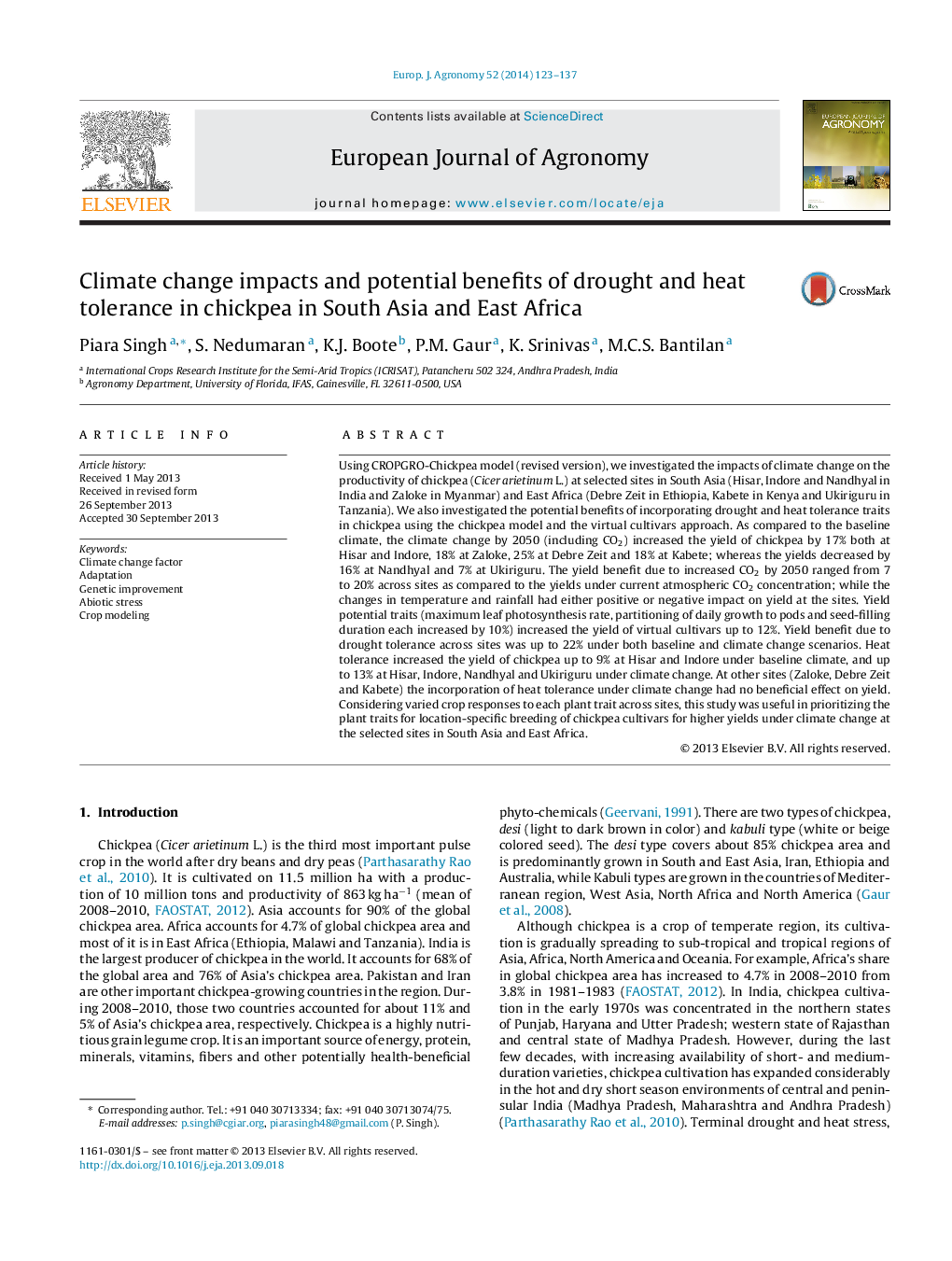| کد مقاله | کد نشریه | سال انتشار | مقاله انگلیسی | نسخه تمام متن |
|---|---|---|---|---|
| 4509016 | 1624473 | 2014 | 15 صفحه PDF | دانلود رایگان |
• Impact of climate change on chickpea yield was quantified for the selected sites.
• Temperature increase was the main factor affecting chickpea yields at the sites.
• The sites varied in the yield benefit of plant traits under climate change.
• Plant traits were prioritized for location-specific breeding of chickpea cultivars.
• Combination of plants traits to breed high yielding chickpeas varied across sites.
Using CROPGRO-Chickpea model (revised version), we investigated the impacts of climate change on the productivity of chickpea (Cicer arietinum L.) at selected sites in South Asia (Hisar, Indore and Nandhyal in India and Zaloke in Myanmar) and East Africa (Debre Zeit in Ethiopia, Kabete in Kenya and Ukiriguru in Tanzania). We also investigated the potential benefits of incorporating drought and heat tolerance traits in chickpea using the chickpea model and the virtual cultivars approach. As compared to the baseline climate, the climate change by 2050 (including CO2) increased the yield of chickpea by 17% both at Hisar and Indore, 18% at Zaloke, 25% at Debre Zeit and 18% at Kabete; whereas the yields decreased by 16% at Nandhyal and 7% at Ukiriguru. The yield benefit due to increased CO2 by 2050 ranged from 7 to 20% across sites as compared to the yields under current atmospheric CO2 concentration; while the changes in temperature and rainfall had either positive or negative impact on yield at the sites. Yield potential traits (maximum leaf photosynthesis rate, partitioning of daily growth to pods and seed-filling duration each increased by 10%) increased the yield of virtual cultivars up to 12%. Yield benefit due to drought tolerance across sites was up to 22% under both baseline and climate change scenarios. Heat tolerance increased the yield of chickpea up to 9% at Hisar and Indore under baseline climate, and up to 13% at Hisar, Indore, Nandhyal and Ukiriguru under climate change. At other sites (Zaloke, Debre Zeit and Kabete) the incorporation of heat tolerance under climate change had no beneficial effect on yield. Considering varied crop responses to each plant trait across sites, this study was useful in prioritizing the plant traits for location-specific breeding of chickpea cultivars for higher yields under climate change at the selected sites in South Asia and East Africa.
Journal: European Journal of Agronomy - Volume 52, Part B, January 2014, Pages 123–137
